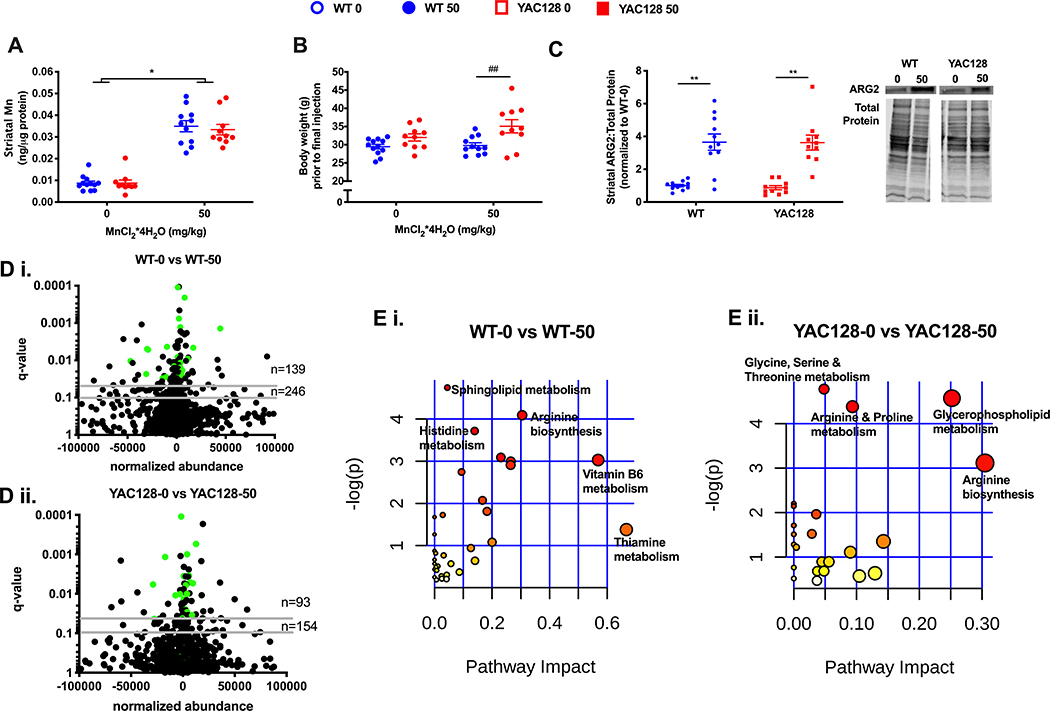figure 4.
the effect of chronic (20-week long) mn exposure in aged wt and hd mice on striatal mn (a), body weights (b), striatal arginase 2 protein levels (c), striatal metabalome (d), and metabolic pathways (e). data for a, b, and c are represented as mean ± sem and n=10–12; an asterisk (*) indicates a significant mn effect and a hashtag (#) indicates a significant genotype effect at a significance level of p<0.05 (*, #) or p<0.01 (**, ##). volcano plots (d) indicate metabolites altered at q-value<0.05 and q-value<0.10 with horizontal grey lines. n=139 and n=246 indicate the number of significantly altered metabolites in wt (d i.) at q-value <0.05 and q-value 0.10, respectively. n=93 and n=154 indicate the number of significantly altered metabolites in hd (d ii.) at q-value <0.05 and q-value 0.10, respectively. more metabolites were altered by mn in wt than in hd, χ2=4.6, df=1, p<0.05. green dots indicate metabolites significantly altered with mn in both wt and hd (30 metabolites) at p<0.05. biological pathways (e) significantly enriched (p<0.05) are annotated in wt (e i.) and yac128 (e ii.), note the difference in x-axis scale (max pathway impact in yac128 is 0.3 compared to 0.6 in wt). pathway impact relates to the ability of enriched metabolites to impact additional compounds within that pathway. circle color (yellow -> red) and circle size (small -> large) reflect an increasing pathway impact and −log (p-value), respectfully. metabolomic data represent feature changes in n=10–12 for each genotype and exposure.

